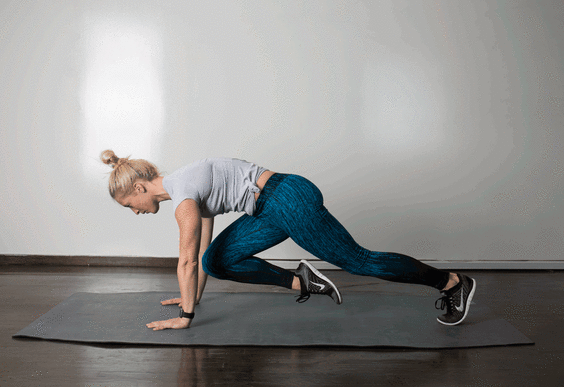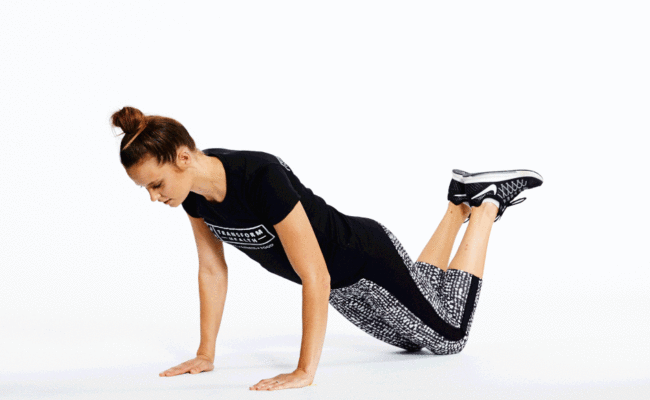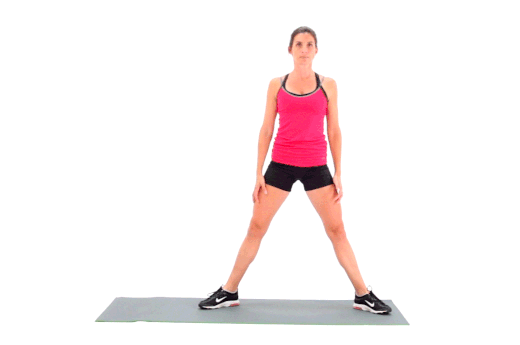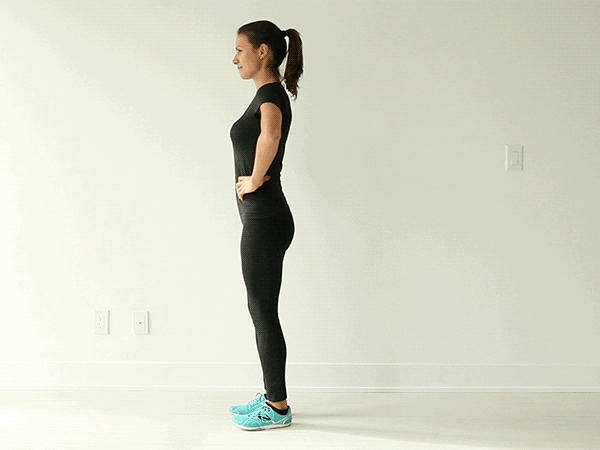Why Tabata Bodyweight Workouts Are Your Secret Weapon for Fitness
Tabata Bodyweight Exercises turn simple moves into serious results. The magic lies in their structure: 20 seconds of all-out effort followed by 10 seconds of rest, repeated eight times. That’s just four minutes, but don’t let the short duration fool you—it’s intense enough to leave even seasoned athletes gasping for air.
What makes bodyweight exercises so effective? You can’t cheat. Your body naturally follows the correct movement patterns when doing squats, push-ups, or mountain climbers. And unlike complicated gym machines, progression is straightforward – want to make it harder? Slow down the movement, add a jump, or try a more challenging variation.
Picture this: Every time you do a push-up, you press your entire body weight off the ground. For someone weighing 140 pounds, that’s like bench pressing a hefty barbell – except you can do it anywhere, anytime, without spending a dime.
The best part? You can string multiple Tabata rounds together for a longer workout. Remember to catch your breath with a full minute of rest between exercises. Start with one 4-minute round and build up to three or four. Your body will thank you – even if your muscles scream during those 20-second intervals.
Pro tip: Start with basic moves like squats, push-ups, and lunges. Once you’ve mastered those, experiment with burpees, mountain climbers, or jump squats. Each exercise should engage multiple muscle groups – that’s how you get more bang for your workout buck.
Get Your Body Ready!
Let’s talk about warming up — and no, I don’t mean your coffee. Before you jump into those intense Tabata intervals, you need to spend about 10 minutes waking up your body. Think of it like your morning stretch, but it’s better. A proper warm-up gets your heart thumping, your blood flowing, and your muscles feeling loose and ready for action.
If you skip this part, you might look like a rusty robot on the workout floor—or worse, nursing an injury later. Trust me, your body will thank you for these extra minutes of TLC before the real work begins. Plus, it’s the perfect time to prepare yourself for the challenge ahead mentally. Consider it your body’s saying, “Hey, heads up! We’re about to do something awesome!”
Here we go! Exercise Breakdown.

Mountain Climbers: Your High-Energy Core Crusher
Ready to turn up the heat on your workout? Mountain climbers are about to become your new best frenemy.
Start by getting into a plank position — you know, the one that makes your arms question your life choices. Your hands should be planted firmly on the ground, arms straight but not locked, and your body should form one strong line from head to heels. Think of yourself as a human table (a very fit table, might I add).
Now for the fun part! Bring your right knee up toward your chest. Here’s a little insider tip: while some folks like tapping their foot down for a quick breather, floating that foot will light up your core like a Christmas tree. Both ways work — you do you!
Here comes the magic: explosively switch your legs in mid-air, like you’re running in place but in a plank position. The left knee comes forward as the right leg shoots back. Think “hot floor, gotta keep moving!”
Aim to keep this running motion going for 20 seconds. And let’s be honest — by the end of a Tabata round, you might feel like your body is staging a rebellion. That’s normal! Start where you are, and trust me on this one: it gets easier. Well, maybe it’s not easy, but you’ll get stronger!
Pro tip: Keep your hips level (no bouncing around like a pogo stick) and your core engaged. Your lower back will thank you later.

How to Do Perfect Sit-ups (That Won’t Kill Your Back)
Let’s talk sit-ups — that exercise everyone thinks they know how to do until their back starts complaining the next day.
First, find yourself a comfy spot on the floor. Lie back like you’re about to make a snow angel, but keep your feet planted firmly on the ground. Bend those knees until they’re at a right angle (think of making an upside-down “V” with your legs). Now, instead of putting your hands behind your head like most people do — which can strain your neck — cross your arms over your chest like you’re hugging yourself.
Here’s the secret sauce: Before moving upward, squeeze your glutes and hamstrings. This little trick will protect your back and ensure you use the right muscles. Then, curl up smoothly—like you’re peeling yourself off the floor—until you’re sitting up. Take your time going back down; imagine rolling back one vertebra at a time.
Give yourself 20 seconds to do as many as possible, but remember: form beats speed every time. If you start looking like a flailing fish, take a break. Your abs will thank you later.

The Perfect Push-up: Your No-Nonsense Guide
Let’s talk push-ups — those things you probably haven’t done since gym class. But trust me, they’re worth another shot. They’re a full-body workout disguised as a straightforward move.
Ready to give it a try? Here’s how to nail it:
First things first: get down on the floor (I know, but it’ll be worth it). Plant your hands just a bit wider than your shoulders. Think of making a slightly wider letter “T” with your arms, not a full-on wingspan situation.
Now, here’s where you’ve got options. If you’re feeling strong, prop yourself up on your toes like you’re about to start a race. Not quite there yet? There’s no shame in dropping those knees to the floor — seriously, even fitness pros start here sometimes.
Here’s the secret sauce: your body should make one straight line, like a wood plank, from your head to your heels (or knees, if you’re doing the modified version). No saggy middles or arched backs allowed!
Before moving, here’s the game-changer: tighten those abs like you’re bracing for a punch. Imagine trying to pull your belly button back toward your spine. It will keep your back safe and make the exercise work.
Now you’re ready for the main event: lower yourself and push back up. That’s it! It’s simple but not easy—that’s precisely why it works.

How to Do the Perfect Squat
Let’s talk about squats — the exercise that makes climbing stairs feel like climbing Mount Everest the next day.
First things first: plant those feet. Space them more expansive than your shoulders, like you’re about to start a superhero pose. Now, here’s where it gets fun. Remember how toddlers squat down to grab their toys? That’s what we’re aiming for! They’ve got perfect form without even trying (those little show-offs).
As you lower yourself down, keep your thighs just above knee level. Consequently, this is where people usually mess up—don’t turn into the Leaning Tower of Pisa! Keep your torso proud and upright—no arching or rounding your lower back; think of your back as a solid, strong, straight board.
Ready for the fun part? Channel your innerspring and explode up and down for 20 seconds. Quick warning: “fast” doesn’t mean “sloppy.” Keep that form tight, or your knees will write you a strongly worded complaint letter tomorrow.
Pro tip: If you’re doing this right, you should be able to balance a cup of coffee on your head (though maybe don’t try that during your workout).

The Plank Sidewalk: Your Core’s Best Friend
Have you ever wanted to make your planks more interesting? Let me introduce you to plank sidewalks—like regular planks that decided to go on an adventure.
Think of this as your core’s version of a dance move. Not only will it fire up those shoulder muscles, but it’ll also challenge your abs in ways a regular plank could only dream of.
Here’s how to rock it:
Start in your essential plank position — you know the one. Hands planted firmly under your shoulders, toes gripping the ground, and your body forming one straight line like a human ruler. Your core should be tight (imagine someone’s about to tickle your belly).
Now for the fun part. You’re going to move like a crab but cooler. Your hands and feet will move in pairs, like a synchronized swimming routine on dry land. Begin by crossing your right hand over your left while simultaneously stepping your left foot out to the side. Then, bring your left hand and right foot over to join them. Boom — you’ve just done your first sidewalk!
Keep this pattern going for about 20 seconds, taking two or three steps in one direction before moonwalking back the other way. And remember: keep those hips steady — no wiggling like a belly dancer (save that for another workout).
Pro tip: Take a break if you are sagging in the middle or your hips are doing the cha-cha. It’s better to nail the form than to wobble through it!

How to Make Perfect Reverse Lunges (Your Knees Will Thank You!)
Let’s master reverse lunges — they’re fantastic for building leg strength and improving balance. Plus, they’re easier on your knees than forward lunges!
Start by standing tall, like you’re trying to touch the ceiling with the top of your head. Put your hands on your hips (yes, like you’re about to give someone a stern talking-to). Make sure your feet are hip-width apart — not too broad or narrow.
Now for the fun part: Take a nice big step back with your left leg, like you’re trying to escape something. As you lower down, bend both knees until your right thigh is parallel to the floor. Your left knee should hover just above the ground — think “almost touching, but not quite.”
Here’s the power move: Push through your right heel (your front foot) to stand back up. Imagine pressing an elevator button on the floor; that pressure will return you to your starting position.
Ready to kick it up a notch? Once you’ve got the essential move down, try alternating legs every time during your 20-second Tabata. Remember two golden rules: Keep that front heel firmly planted (if you can see your toes over your knee, shuffle that foot forward), and stay as upright as possible — no leaning forward like you’re trying to peek around a corner!
Pro tip: If you’re wobbling more than a penguin on roller skates, starting with just one side at a time is fine. Form beats speed every time!
Cool-Down: Your Body’s Thank You Note
Let’s talk about the most skipped (but super important) part of your workout — the cool-down.
Think of it like this: You wouldn’t slam the brakes on your car while going 60 mph, so why do that to your body? After pushing yourself through a workout, your heart races, and adrenaline fires up your muscles. They need time to return to normal.
Start with about 5-10 minutes of light movement — a casual walk or easy pedaling on a bike works perfectly. This gentle activity helps your heart rate drift back down while keeping blood flowing through your muscles.
Once you’ve caught your breath, it’s time to pamper your muscles. Stretch your whole body (yes, even the parts you didn’t work out), try foam rolling if you have one handy, or do some basic stretches. Your muscles are warm and pliable, making this the perfect time to work on flexibility.
Remember, a proper cool-down isn’t just a fitness trick. It helps prevent dizziness, reduces muscle soreness, and might make your next workout easier. For just a few extra minutes, it’s a pretty good deal.
Getting Started with Tabata: Tips for Beginners
Before you jump in, though, let’s talk about innovative training. First things first: warm up for at least 10 minutes. Trust me, your body will thank you later.
Are you new to this whole Tabata thing? No worries – we’ve all been there. Start with 5 or 6 cycles of each exercise, and give yourself a generous 20-30 seconds of rest between rounds. It might feel too easy initially, but remember: you’ll want to build up your tolerance gradually. You can dial up the heat as you get stronger by shortening those rest periods and adding more cycles.
Are you planning to stack multiple Tabata sets? It’s brilliant but rest between them for at least a minute. Your heart rate needs that quick reset.
Here’s something crucial that often gets overlooked: pay attention to how you feel throughout the workout. Tabata has a sneaky way of building up intensity. When you hit those final rounds, your muscles are screaming, and your form might get sloppy. That’s precisely when injuries love to show up uninvited.
Speaking of staying safe, resist the urge to do this workout daily. Once or twice a week is plenty. Your muscles need time to recover; overdoing it is a one-way ticket to injury.
Pro tip: Some fantastic apps are out there to keep your timing on point. Tabata Pro (available for both iPhone and Android) is a popular choice. It’s like having a personal Tabata DJ in your pocket, minus the questionable music choices.
Remember: Tabata is intense but doesn’t have to be intimidating. Start where you are, listen to your body, and watch yourself get stronger with each session.
Final Thoughts on Tabata Bodyweight Exercises
Ever wish you could get a fantastic workout in less time than it takes to brew your morning coffee? Enter Tabata training, the four-minute workout that has been making fitness buffs sweat since the 1990s.
But what makes Tabata truly special is that those four minutes can torch more calories than a steady 60-minute jog. Sounds too good to be true? The secret lies in the “afterburn effect” — your body keeps burning calories long after you’ve finished your last rep.
Starting can feel like trying to sprint through a sandstorm. That’s normal. If you’re gasping for air like a fish out of water, there’s no shame in extending those rest periods or taking a breather between rounds. Your body’s signals aren’t just noise — they’re essential feedback.
Remember: Tabata is like espresso. It’s concentrated and powerful, but you don’t need it daily. Once or twice a week is plenty for most people. More isn’t always better, especially with high-intensity training that pushes your body to its limits.
Listen to Your Body (No, Really)
Expect a burning sensation in your muscles. Sharp pain or dizziness is your cue to pump the brakes. High-intensity training is like driving a sports car—thrilling, but you must respect its power. If something feels off, step back, modify the exercises, or give yourself an extra rest day.
The beauty of Tabata isn’t just its efficiency — it’s its flexibility. You can adapt it to your fitness level, swap exercises, or even reduce the intensity when needed. You can stick with the best workout, and Tabata’s brief but powerful format makes it surprisingly sustainable.
Remember: The Romans didn’t build Rome in a day, and your fitness won’t happen in one either. But with Tabata, you might make it a bit faster than you thought possible.
Important Safety Note:
As with any new exercise program or equipment, it’s essential to consult your physician to ensure the equipment is safe for you to use. It is especially crucial if you have any medical or physical conditions impacting your ability to exercise properly or putting your health at risk. Additionally, if you’re taking medication that affects your heart rate, blood pressure, or cholesterol level, your doctor’s advice is vital to create a workout plan that suits your needs.
Share Your Thoughts and Questions
I hope this in-depth article about Tabata Bodyweight Exercises was helpful and informative. I encourage you to share your thoughts and questions on the topic. Have you tried any of these exercises before, or have experience with similar ones? Your insights can help others make an informed decision. Additionally, I welcome any feedback about my website and suggestions for future content. Your input is invaluable in creating a supportive and informative community.
I look forward to hearing from you and continuing the conversation!
Disclaimer: I am not a personal trainer or a healthcare professional. The workouts I post about work best for me, but they might not be the correct type of exercise for you. I recommend consulting a doctor or health professional before changing your diet and fitness routine.
You May Also Like
HIIT Workouts for Women: Maximum Results in Minimum Time
Hey there, Robert! I love the Tabata exercises, as I have been following through since my quarantined period. The activities that you have recommended is in my regular sets, but I don’t usually do the plank sideways, I would like to try that out later this evening when I’m doing my workout sessions. I typically love also to use the Spotify ‘Tabata’ music, which helps me keep up the motivation in exercising (For me, It cant be pretty tiring and demotivating without music). I also like how you include pictures/gifs to show an example of the exercises. I also love your tips here! It’s clear to say that you have a vast knowledge of your topic. Keep it up!
Wow! I haven’t heard anything about the Tabata bodyweight exercise in the past, and I would like to know about a new trend or something. The moves in the Tabata bodyweight exercise are much more familiar with the other steps that I have seen in time past. However, sit up happens to be a perfect exercise that helps to burn belly fat.